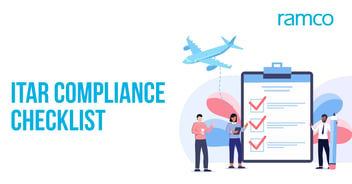
“If you do up-front inspections and if you use static analysis before testing begins, your schedule will be shrunk by at least 50% and your software quality will be above 95%,”- CarperJones,leading specialist in software engineering methodologies Jones believes that static code analysis and inspections of individual lines of code should be done before the testing phase in order to allow testing to catch the remaining bugs and provide a secure, stable product for customers. The business impact of software defects has never been greater, from time to market delays to customer satisfaction issues. The era of GPF and front end errors are addressed by usage of well-designed Platform Architecture such as Ramco Virtualworks. However, the business logic is embedded extensively into the SQL and the resource skill plays critical role in implementing the business logic. Implementation challenges Challenge # 1: Static code analysis as a standalone process is highly difficult to implement and validate the use of it. Solution: a) The Static Code analysis process has been integrated with Configuration Management Process. b) Enabled developers to sanitize the code before ready for check-in to the Controlled Source Safe. Challenge # 2:Latent Exceptions – In a situation where the teams are in support or smaller enhancement mode, the changes are done incrementally on existing artefacts, resolving the latent exceptions considered as obstacles in meeting the immediate expectations. Not introduced by me syndrome. Solution:Provided options to:
- to review the exceptions
- clear or defer with reason for deferral for follow-up action
- submit the code for review.
Challenge # 3:Source Control & Exception tracking – There is no clarity on whether the codes being checked-in have been subjected to static code analysis and whether necessary steps have been taken to resolve or defer the exceptions. Solution: a) Reviewer has the ability to view the exceptions and either accept or revert to developer for necessary corrections. b) Check-in process validates that the source code version getting checked into the Controlled Source Safe, is sanitized by the static code analyzer and allows only code which is reviewed. Benefits:
- Enables reviewers to focus on logical errors.
- Central Repository of Sanitized code base details.
- All known or un-cleared exceptions, technical debt, are available for ready reference.
Use of static code analysis tools unearths the syntactical errors much early in the life cycle of the development by developers themselves. This enables the code reviewers to focus on the most important business logic part, thus improving the overall internal quality. References http://www.sdtimes.com/link/35922
Enterprise asset management (EAM) involves the management of mission critical assets of an organization throughout each asset's lifecycle. EAM is used to plan, optimize, execute, and track the needed maintenance activities with the associated priorities, skills, materials, tools, and information. The aim is to optimize the quality and utilization of assets throughout their lifecycle, increase productive uptime and reduce operational costs.
Enterprise asset management (EAM) involves the management of the maintenance of physical assets of an organization throughout each asset's lifecycle. EAM is used to plan, optimize, execute, and track the needed maintenance activities with the associated priorities, skills, materials, tools, and information.
The software helps in effective maintenance of assets through preventive, predictive, shutdown and breakdown maintenance strategies. The system also helps enterprises mitigate equipment risks by enhanced safety standards. The streamlined operations and improved asset performance helps organizations increase their investment effectiveness.
EAM is important because it helps organizations track, assess, manage and optimize asset quality and reliability. Asset intensive Organizations have hundreds, thousands, even millions of assets which needs to be maintained to maximize / optimize life of these assets to increase the return on investment.
The key features of effective EAM are:
- Work management.
- Maintenance Strategies (Preventive/ Predictive / Breakdown / Shutdown).
- Planning and scheduling.
- Supply chain management.
- Health and safety.
- Mobility.
- Analytics.
- Improved Asset Health at reduced cost through data driven maintenance Programs
- Complete visibilityon entire maintenance data across Equipment, across Models, across Branches to aid in analysis & decision making such as to Repair or Replace the Equipment
- Insightful analysis of Inspection Data to improve customer satisfaction
- Effective maintenance management enhanced by predictive maintenance and inbuilt analytics
- Increased reliability and safety, keeps complete track of all the inspections & calibration schedules
- Mobile Application enables users to execute work while “in the field” leading to minimized non-productive time and increased productivity and reduces duplication of work and human errors in recording information.
- Quick turnaround time through Actionable Notification & Alerts for every process in real time and accessible anytime and anywhere.
- Improved Regulatory Part of asset management involves the implementation of better O&M practices, which can significantly improve compliance.
Asset Intensive companies under the following Industries :
- Ports
- Cement and Mining
- Utilities
- Fleet Maintenance
- Equipment Rental
- Other Manufacturing
- Real Estate & Infrastructure
- Power Generation
Contact us for a meeting and schedule a demo
This differs on case to case basis, based on the type of installation and unique industry specific requirements. Contact us for a meeting and schedule a demo.
This differs on case to case basis, based on the type of installation and unique industry specific requirements. Contact us for a meeting and schedule a demo.
Stay Connected, follow us on LinkedIn / Twitter to know more about EAM Software latest trends.


